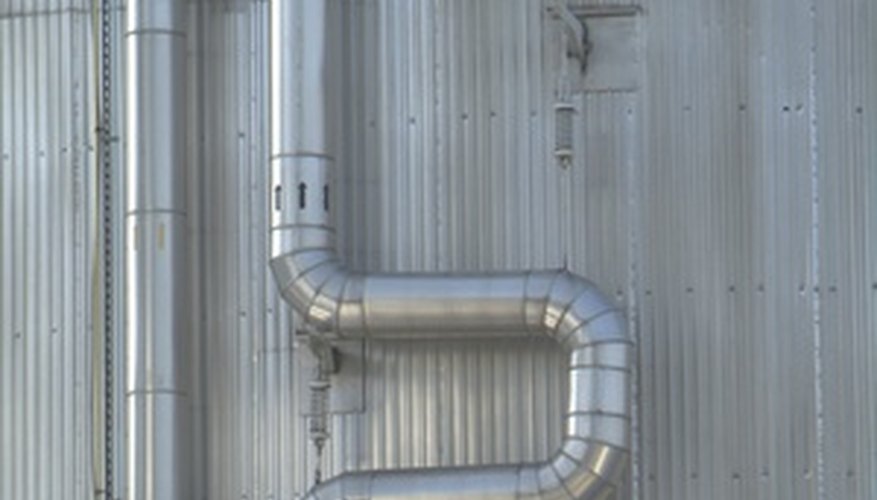Engineers or designers who need to transport hot fluids through pipe over a distance need to account for the natural heat loss that will occur along the way. These thermodynamic calculations can be quite complex unless certain assumptions are made, one being steady conditions and the other a lack of convection in the area of the pipe. Fortunately, for most practical applications these assumptions are valid and will allow for accurate results.
- Engineers or designers who need to transport hot fluids through pipe over a distance need to account for the natural heat loss that will occur along the way.
- These thermodynamic calculations can be quite complex unless certain assumptions are made, one being steady conditions and the other a lack of convection in the area of the pipe.
Determine the thermal conductivity, also known as the heat transfer coefficient, of the pipe material for which you are calculating heat loss. A link to a table with the values for most common pipe materials can be found in Resources.
Record the expected temperatures of the fluid to be transported through the pipe, and the air temperature outside of the pipe.
Use the following equation and simply substitute in the appropriate values:
Q= 2 * (pi) * k * L(T1-T2)/ [ln(r2/r1)]
where k= the heat transfer coefficient of the pipe material,
T1= the inside temperature of the pipe, which can be assumed to be the same as the fluid temperature,
T2= the outside temperature of the pipe, which can be assumed to be the same as the air temperature outside the pipe,
L= the length of pipe over which the fluid will be transported,
r1= inner radius of the pipe,
r2=outer radius of the pipe,
ln=natural logarithm,
pi=3.14159,
and the final value will yield the heat loss in the pipe. Use consistent units in your calculation; a proper calculation will yield a result expressed in heat loss per linear distance, such as watts per foot.
